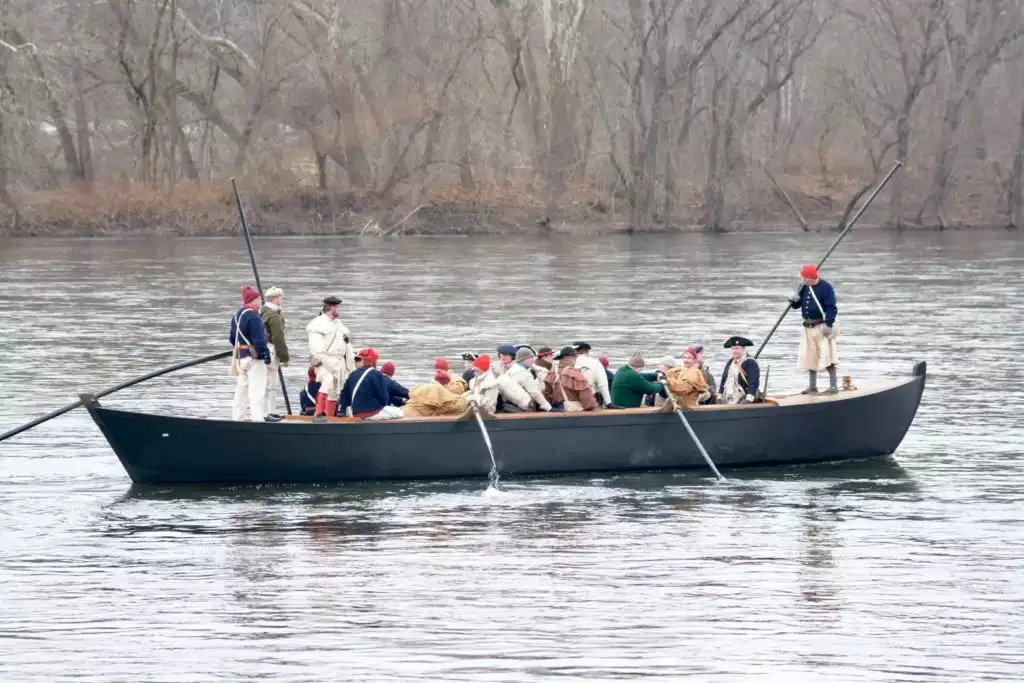
In the midst of anticipating a new year, there’s time to make a difference. As the winter solstice slides by and days begin to lengthen, we’re literally welcoming more light every day, but how, in these fraught times, do we each bring more light to the world? I’ve recently gleaned some lessons from George Washington, Angela Davis, and Virginia and Edward Taylor.
The first lessons are to be bold in the face of challenge and when put to the test, to stand and fight for your beliefs. As George Washington crossed the Delaware River on December 25-26, 1776, he hoped that a quick victory by surprise attack on a garrison of Hessian soldiers would boost morale and encourage more men to join the Continental Army in the new year. Met with more resistance and a larger army of seasoned soldiers than anticipated in Trenton, Washington and his senior officers used a hand-drawn map from information reported by an unnamed Princeton student, who had observed the British positions around town, to shape a successful plan of attack for the Battle of Princeton. Corollary lessons: stop and listen, learn more, and (via 2018), sometimes the river is too high and it’s best not to try and take the boat across as planned, but rather to follow an alternate course.
Fast forward to the twenty-first century in Princeton. Educator and activist Angela Davis returns to campus late in 2018 and chooses to talk about hope in the context of history, economics, and racial injustices. Lessons drawn from her lecture: follow where your conscience leads, recognizing a need for progress and doing the work as you can. Consider the perspective of time — things change, they always do. Look outward and travel to escape, travel to learn. Share what’s inside yourself through creativity, art, dance, and channel self-expression to find common and productive grounds for growth. Don’t stop telling your story.
Also close to home, there’s a family who very well may have been your neighbors, the late Virginia and Edward Taylor, who, over the years, quietly made huge impacts on our community, including here at the library. Working at Princeton University, Edward Taylor’s research on anti-folate compounds fostered development (with Eli Lilly Corporation) of Alimta, the first drug approved for the treatment of mesothelioma, prolonging the lives of cancer patients. The U.S. patent royalties for Alimta supported the construction of the Frick Chemistry Building, which also houses includes the Edward C. Taylor Auditorium and Taylor Commons. Taylor taught and mentored generations of Princeton students, and, post-retirement, continued to support new generations of scientists by establishing the Edward and Virginia Taylor Professorship in Bioorganic Chemistry and the Edward C. Taylor Fellowships for third-year graduate students in chemistry. Taylor’s wife of 68 years, Virginia Crouse Taylor was president of the Princeton University League, served as science editor of the Princeton University Press, taught science for the Princeton Public Schools, produced a New Jersey Public Television program on health issues called “The Whole You” and supported various causes and interests. Princeton Public Library was a regular stop for the Taylors. Their question to our director was always, “What do you need?” We recognize them as benefactors, for their donations over a period of multiple years were always made with the specific aim of helping the people who worked at the library, along with those who use the library. When we set out on an extended project to prepare our collections for the self-pickup/self-check service fully realized in 2018, it was thanks to the Taylors who had provided us with the private/public partnership funding needed to put the pieces in place. Next time you use a big red self-checkout kiosk on the library’s first or third floor, take a moment to say a silent thank you!
A new year offers opportunities for looking back to re-discover our operative framework of hope, even as we focus on looking ahead. Perhaps it’s not so much a matter of stopping time as changing tempo.
Thank you to Sharon Marcello LaRossa for the photograph of 2018’s Washington’s Crossing reenactment rehearsal.
